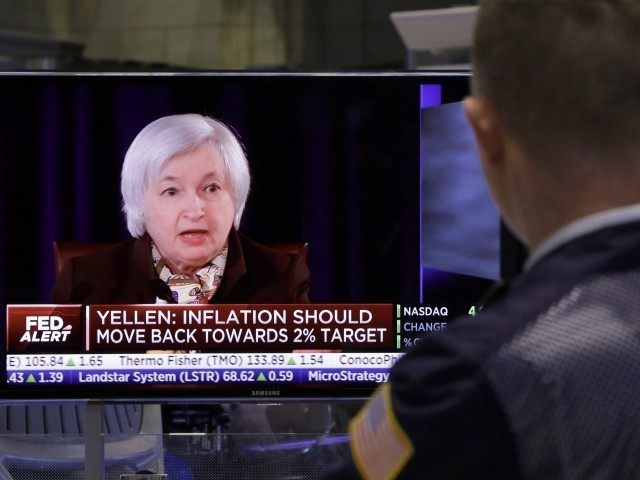The Federal Reserve is on track to raise interest rates later this year. Chairwoman Yellen has good reasons to push ahead, but she may not get very far in her quest to “normalize” rates.
Inflation is heating up.
Thanks to falling oil prices through January, consumer prices are down 0.2 percent from a year ago, but more recently oil and retail gasoline prices have been surging. Core inflation, which excludes volatile energy and food prices, is quite close to the Fed’s target of 2 percent and accelerating in recent months.
Investors are building a 2 percent inflation premium into the price of 10 and 20 year Treasury securities, and history teaches inflation can fly out of control if the Fed does not act preemptively.
Rock bottom short term interest rates impose significant distortions on labor and asset markets. For example, elderly Americans rely on CDs to invest significant portions of retirement savings, but the 5 year rate on those is 1.45 percent—well below expected inflation, especially factoring in taxes. Consequently, larger numbers of Americans over 65 are working, crowding out young job seekers struggling to start careers.
Near zero short term borrowing rates for banks artificially lower risks on trading, deal making, and financing hedge funds and private equity plays, and distract banks from lending to young businesses with good ideas to grow the economy.
Cheap mortgages have pushed up residential real estate values to levels that discourage homeownership by young families. That’s an important reason new home construction has not recovered to pre-financial crisis levels.
The Fed has indicated it would like to slowly raise the overnight bank borrowing rate (federal funds rate) from 0.125 percent to 3.75 percent. By my estimates, that would imply a nominal 10-year Treasury rate of 4 to 5 percent—or adjusted for inflation a real interest rate on productive business investments of 2 to 3 percent. That is simply not sustainable now or in the foreseeable future.
After a tough winter, economic growth should recover to 2.5 to 3 percent by the second half of this year—but only if the Fed does not push up interest rates too much.
Asian and European central banks are pursuing aggressive monetary policies aimed at weakening exchange rates for their currencies against the dollar and boosting exports at the expense of sales of U.S.-based businesses. Significant increases in U.S. interest rates would strengthen the dollar further, and the resulting surge in imports and lost exports could easily slice one percentage point off U.S. growth and reduce jobs creation to perilously low levels.
Moreover, a real long term interest rate of 2 to 3 percent is no longer sustainable, because digital technologies permit businesses to use capital so much more efficiently these days.
In five short years, Google used off the shelf technology and the free internet to convert its search engine and initial investment of $25 million into a company worth $23 billion at its 2004 initial public offering. Industrial era entrepreneurs like Henry Ford required a lot more capital and decades to build factories and distribution networks to amass similar wealth.
The Google story is repeating at startups like Uber and new investments at old-line industrial companies. That makes capital abundant and cheap, raises sustainable stock prices higher above what historically price-earnings ratios imply, and explains why many established corporations are flush with cash and buying back shares.
In June 2006, when the Fed pushed the federal funds rate to its pre-crisis peak, the real rate on 10 year Treasuries was 2.5 percent—closely in line with the Fed’s current target for normalizing rates. That exacerbated the financial crisis that began in 2007.
By 2017, the Fed may able to raise the federal funds rate to 1.5 percent—and the nominal and real rates on 10 year Treasuries to about 3.5 and 1.5 percent respectively—without torpedoing the economic recovery, but that’s about all.
Peter Morici is an economist and business professor at the University of Maryland, and a national columnist. He tweets @pmorici1.

COMMENTS
Please let us know if you're having issues with commenting.